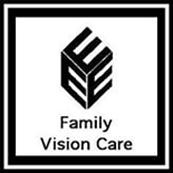Guide to Vision Problems in School-Aged Children
How to Identify and Correct Vision Problems in School-Aged Children
.png)
As a parent, you want your child to succeed in school and achieve their full potential. One of the most important factors to consider when it comes to education is vision.
Much of the important information your children need to learn is presented visually, and if your child cannot see the board or read smaller print, they can fall behind.
Fortunately, many vision problems that arise in childhood can be corrected with regular care and visits to the eye doctor.
Ready for a back-to-school eye exam? Here’s what you need to know!
In this blog post, we'll discuss the relationship between vision health and school, as well as warning signs to watch out for in children ages 6-18.
What Visual Skills Does My Child Need for Academic Success?
Vision goes beyond being able to clearly see shapes and colors, especially in an academic sense. It is also the ability to understand and respond to what is seen. These skills can be harder to identify.
For effective reading and learning, every student needs the following skills.
- Visual acuity. This is the ability to see clearly over a distance. It is a key skill for viewing the chalkboard, reading computer screens, or reading books up close.
- Eye focusing. This is the ability to quickly focus on objects that are far away, or when looking from one object to another. Your child’s ability to focus on objects quickly and maintain that focus is key for extended learning.
- Eye tracking. This is the ability to keep the eyes focused on a target as it moves from one point to another. Eye tracking comes into play when moving the eyes across a printed page or following a ball.
- Eye teaming. This is the ability to use the eyes together as they move along a printed page. Additionally, this skill helps students determine the depth of schoolwork and sports.
- Eye-hand coordination. This is the ability to take visual input and translate it to actions performed by the hands. Eye-hand coordination comes into play when writing, drawing pictures, or playing sports.
- Visual perception. This is the ability to organize information on a printed page into letters, numbers, words, and ideas. It also contributes to a student's understanding of what they have read.
Signs of Eye and Vision Problems in Children
Every parent wants their child to succeed in school. Vision problems can stand in the way of academic success.
Parents should be on the lookout for the following signs to help determine if their child is struggling with their vision.
- Squinting. If your child is squinting or rubbing their eyes frequently, it could be a sign of vision problems.
- Holding objects close to their face. If your child is holding books or other objects too close to their face, it could be a sign that they're having trouble seeing things from a distance.
- Tilting their head. If your child is tilting their head to one side when looking at something, it could be a sign they are having problems with their vision.
- Avoiding reading or other close-up work. If your child is avoiding reading or other close-up work, it could be because they're having trouble seeing the words clearly.
- Complaints of headaches or eye pain. If your child is complaining of headaches or eye pain, it could be a sign of vision problems.
If you notice any of these signs in your child, it's important to schedule an eye exam with an optometrist as soon as possible.
Understanding School Vision Screenings and Their Limitations
School vision screenings are a way to test for vision problems in school-aged children. However, it's important to understand that a vision screening is not a comprehensive exam. Even if a child passes a screening, they should still receive a comprehensive eye examination.
A comprehensive eye examination includes a variety of tests to evaluate eye health and function, as well as the clarity of vision. It's important to have your child's eyes examined by an eye care professional at least once a year, even if they do not show any signs of vision problems.
Prioritizing Your Child's Eye Health: Back-to-School Exams with Oxford Family Vision
It can be difficult to determine your child’s visual needs. Headaches and squinting are signs that are easier to spot, but many children have visual issues that go unnoticed even by the most observant of parents.
For that reason, every child needs regular eye exams from a qualified optometrist.
Oxford Family Vision Care is here for you and your family. Located in Oxford, Ohio, right by Miami University, Dr. Jeffrey Collins is here to help improve your children’s vision and has been providing excellent vision care for families all over Butler County since 1989.
For better vision health for your children before the school year starts, book an appointment with Dr. Collins at Oxford Family Vision Care today!
Satisfied with the Oxford Family Vision Care difference? Leave us a review on Google here!
Want more free vision care content? Follow us on Facebook and Instagram for more!
